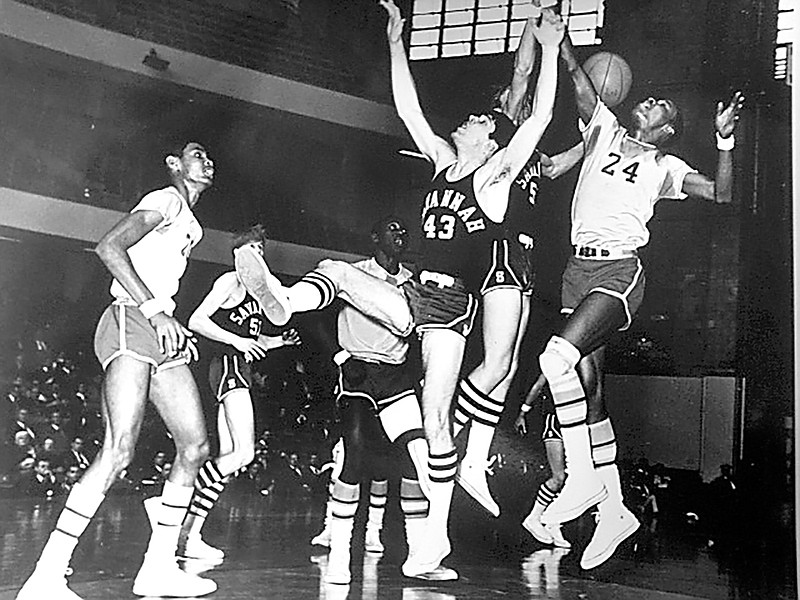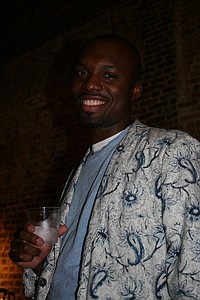Read more
Interracial game 50 years ago still 'a big deal'
On the surface, it was only a game. Like thousands played before and countless more since, it was just a 32-minute high school basketball game between two talented teams.
But the significance surrounding the game -- the events leading up to it and the road it paved for the future -- stretched far beyond sports.
This year marks the 50th anniversary of the decision that resulted in Tennessee becoming the first and only state in the South to integrate high school sports without being forced to by the courts. In January 1965, the basketball game between Nashville's all-black Pearl High and Father Ryan, a mid-state integrated private school, was not only the first interracial high school sports event in state history, but was also the first in the South.
One month later, the state's second interracial game took place in Chattanooga when Notre Dame hosted Howard in a boys' basketball game that drew so many fans that the overflow of onlookers stood outside and watched through the gym's windows.
"That's one of those things that you didn't really realize at the time how significant it was," said Randell High, a sophomore on that Howard team. "We were all just kids wanting to play a game and see how we stacked up against another good team. But looking back on it now, I'm proud of that particular time and the fact that I was a part of that change.
"It's a common thing now, to see integrated teams, but back then there was a lot of unknown. It should have been acceptable anyway, but it took time to change."
During an intermission in the 1962 boys' state basketball tournament, then-TSSAA Executive Secretary A.F. Bridges was asked by the media about the future of the organization that oversaw athletics among the state's white schools and whether he believed integration was imminent.
"We (whites) have our association and they (blacks) have theirs," Bridges responded, according to TSSAA records. "I don't think they will be interested in giving up what they have."
But two years later Bridges met with Samuel Beasley, the principal at East High in Jackson, and also the secretary-treasurer of the state's all-black high school governing body, to discuss a merger. The meeting took place at Bridges' office at Trenton Peabody High hours after school was dismissed when only he, Beasley and a janitor were in the building.
At a meeting of the TSSAA Board of Control on June 11, 1964, the board voted to accept the all-black schools as affiliate members of the TSSAA, which meant they were eligible to compete in state tournaments beginning the following school year.
"For Tennessee to do that without a court order, all the credit goes to those two directors of the black and white associations," said current TSSAA Executive Director Bernard Childress, who is African-American. "I went to a segregated junior high school and then to Columbia High School the year they integrated (1969) and I was literally scared to death. I was a kid and I didn't know what to expect.
"But because of the integration of the sports teams at many schools around the state, by that time it wasn't as big a deal. The fear of the unknown turned out to be the biggest issue. You owe a debt of gratitude to the men with the foresight to realize sports could be a great way to bring the two races together. I want to thank them so much for what they've done because without their wisdom and overcoming all the challenges at that time, I wouldn't be sitting where I am today."
Although Father Ryan had been admitting black students for 10 year, they were not allowed to participate in extracurricular activities, including sports, until 1964. When Father Ryan played Pearl on Jan 4, 1965, the game was moved to Vanderbilt's Municipal Auditorium because neither school's gym could hold the anticipated crowd.
More than 8,500 fans, the largest crowd to ever witness a high school basketball game in state history, filled the gym and watched Father Ryan claim a 52-51 win on a buzzer-beating shot. The fans were so loud that at one point Father Ryan was issued a technical foul for failing to return to the court after the horn had sounded. Several players said in post-game interviews that they could not hear the horn over the crowd.
Weeks later, Chattanooga took its turn in hosting a prep basketball game between integrated Notre Dame and all-black Howard. With the TSSAA's decision to admit all-black schools as members it was Memphis Melrose's track team that became the first of those to win a state championship in the spring of 1965.
The following year, Nashville Pearl won the 1966 state basketball championship at Vanderbilt and two years later Chattanooga Riverside won the first of its three state basketball titles, with the others following over the next three seasons.
Just two months after Howard had traveled to play at Notre Dame, the Rev. Martin Luther King Jr. led the march from Selma, Ala., to Montgomery to protest laws that denied African-Americans the right to vote. In August of that year, President Lyndon B. Johnson signed the Voting Rights Act, and a week later race riots tore apart the Watts neighborhood of Los Angeles and the West Side of Chicago.
The slow journey toward change was helped along in the Chattanooga area, and across Tennessee, by the willingness of high school coaches to schedule more and more games between integrated teams and the predominantly black schools.
"It may have been just a basketball game, but really it was much more," said Howard's legendary former coach Henry Bowles. "Those games were the start of something. Sports was the reason people began to accept integration. Sports did more to keep things calm at that time than the churches did or could. Through sports, I saw attitudes change. After the games, kids would shake hands and even have conversations.
"Now you see kids slapping each other on the back, congratulating and hugging each other regardless of color. They're all on the same team and that's the only color those kids care about -- which is the way it should be."
Contact Stephen Hargis at shargis@timesfreepress.com or 423-757-6293.

